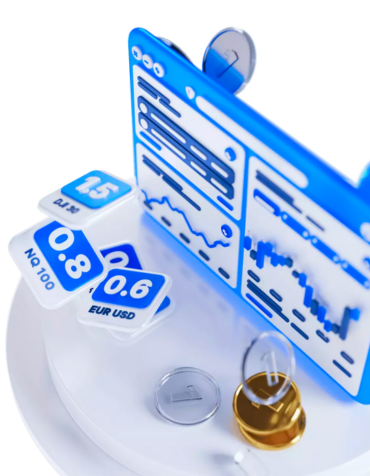We round up the best brokers that we believe offer best value for forex traders.





Trading the USDMAD forex pair involves buying or selling it in the foreign exchange (forex) market. Here are the basic steps to trade USDMAD:
To trade any forex pair, including USDMAD, you'll need to open an account with a reputable forex broker. Ensure that the broker offers access to this specific USDMAD pair.
Deposit funds into your forex trading account. The amount you deposit will determine the size of your trading positions.
Before making any trades, perform a thorough analysis of the USDMAD pair. This analysis typically involves fundamental analysis (economic data, interest rates, geopolitical events) and technical analysis (price charts, indicators) to determine your trading strategy.
Most brokers offer trading platforms that allow you to execute trades. Familiarize yourself with the platform's interface and tools.
Choose whether you want to buy (long) or sell (short) the USDMAD pair based on your analysis. Enter the trade order on your trading platform, specifying the amount (lot size) you wish to trade.
Executes the trade immediately at the current market price.
Sets a specific price at which you want your trade to be executed.
Sets a price at which your trade will be triggered if the market moves in a certain direction.
To manage risk, consider setting stop-loss orders to limit potential losses and take-profit orders to lock in profits at a certain price level.
Once your trade is executed, monitor the USDMAD pair's price movement. Keep an eye on news and events that may impact the exchange rate.
When you achieve your trading objectives, either manually close the trade or wait for your predetermined take-profit or stop-loss levels to be reached.
After closing your trade, assess the outcome. Review your trading strategy and learn from both successful and unsuccessful trades to improve your skills.
Always practice proper risk management. Never risk more than you can afford to lose, and consider using leverage cautiously if available.
First up, we have the Trend Trading Strategy. This one is all about identifying the prevailing trend and trading in that direction. To do this, you'll want to analyze long-term charts and look for higher highs and higher lows for an uptrend or lower highs and lower lows for a downtrend. Once you've identified the trend, you can enter long positions (buy) when there's confirmation of an uptrend or short positions (sell) when there's confirmation of a downtrend. You can also use technical indicators like moving averages, MACD, or RSI to help confirm your trade entries and exits.
Next, we have the Breakout Strategy. This strategy focuses on finding key support and resistance levels where price tends to break out from its range-bound movement. You can identify these levels by looking at previous swing highs/lows, drawing horizontal lines across significant price levels, or spotting chart patterns like triangles or rectangles. Once you've found these levels, keep a close eye on price action around them and wait for confirmed breaks above resistance (buy signal) or below support (sell signal). It's also helpful to analyze volume during breakouts - higher volume supports their validity. And don't forget to place stop-loss orders below support on buy trades or above resistance on sell trades to manage your risk.
Lastly, we have the News Trading Strategy - but I want to emphasize that this one comes with high risks due to unpredictable market reactions! So be cautious if you decide to give it a try. With this strategy, you'll be taking advantage of significant economic events that may impact the USD/MAD exchange rate by creating short-term volatility. To do this effectively, stay updated with economic calendars and news releases related to both the US dollar and Moroccan economy. Focus on high-impact events like central bank announcements, GDP releases, or interest rate decisions. Before the news release, identify key support and resistance levels where price may react strongly if breached. Also, pay attention to market sentiment surrounding the event (like consensus forecasts) and consider trading in line with expectations or against them if there's a deviation. And as always, use stop-loss orders to manage your risk because things can get pretty volatile during these times.